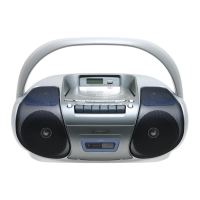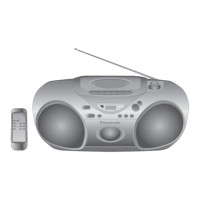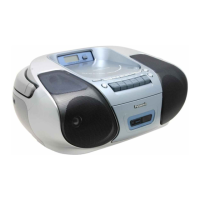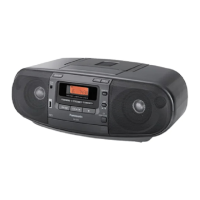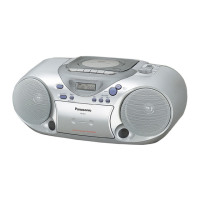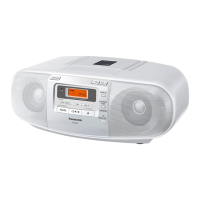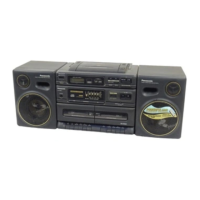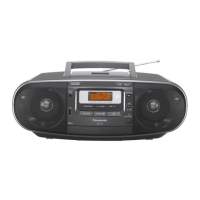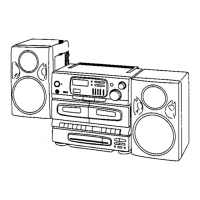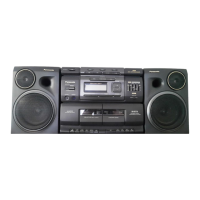Before connecting, operating or adjusting
this product, please read these instructions
completely.
Please keep this manual for future reference.
Power sources
The unit can be powered with household AC power or dry cell batteries (not included).
Insert memory batteries (not included) to save stored CD programs and radio stations.
Memory back-up
Insert batteries (not included) to save CD pro-
grams and radio stations you have set. If memory
batteries are not used, memory items are erased
in the following situations:
• Power failures,
• The power cord is disconnected from the power
outlet,
• The power cord is connected to the unit while
the unit is being powered by batteries.
When to change the batteries
The batteries last about a year.
Connect the unit to AC power before replacing
the batteries.
Removing the batteries
Press the negative end of the number 4 battery
and remove the batteries. (Remove the power
batteries first.)
User memo:
DATE OF PURCHASE
DEALER NAME
DEALER ADDRESS
TELEPHONE NUMBER
Using a household AC outlet
Connect the power cord firmly to the unit and the
outlet.
• Before connecting or disconnecting the cord,
stop the tape and switch [
] to “TAPE/
” to turn the power off. The memory bat-
teries are worn out faster if the cord is discon-
nected with the power still on.
• Conserving power
The unit consumes 1W even when it is turned
off with [
]. To save power when the
unit is not to be used for a long time, unplug it
from the household AC outlet. Remember to
reset the radio stations and any other memory
items before using the unit again if you haven’t
inserted memory batteries.
Using batteries
The unit cannot be powered by batteries if the
power cord is connected.
(R20/LR20, D, UM-1)
When to change the batteries
Sound quality and operations are affected when
the batteries are running low. Replace all six
batteries. It is also a good idea to replace all the
batteries before recording.
Removing the batteries
Open the battery cover
and insert your finger in
the hole on the bottom
of the unit and push out.
RQT6742-1P
Household AC outlet
(AC 120
V, 60
Hz)
AC power cord
(included)
Inner row
Outer row
Dear customer
Thank you for purchasing this product.
For optimum performance and safety, please read these instructions
carefully.
These operating instructions fundamentally explain the operation of
RX-D23.
The model number and serial number of this product can be
found on either the back or the bottom of the unit.
Please note them in the space provided below and keep for fu-
ture reference.
MODEL NUMBER _________________________________
SERIAL NUMBER _________________________________
The illustrations show RX-D23.
Supplied accessories
Please check and identify the supplied accessories.
Use numbers indicated in parentheses when ask-
ing for replacement parts.
(Only for U.S.A.)
To order accessories contact 1-800-332-5368 or
web site (http://www.panasonic.com).
AC power supply cord (polarized) (RJA0065-1D) .................. 1pc.
Note
The included AC power supply cord is for use with this unit only. Do
not use it with other equipment.
Remote control transmitter ..................................................... 1pc.
(EUR648257)
Portable Stereo
CD System
Operating Instructions
Model No.
RX-D23
RX-D20
P PC PL
D1 12/16/02, 1:19 PM1


